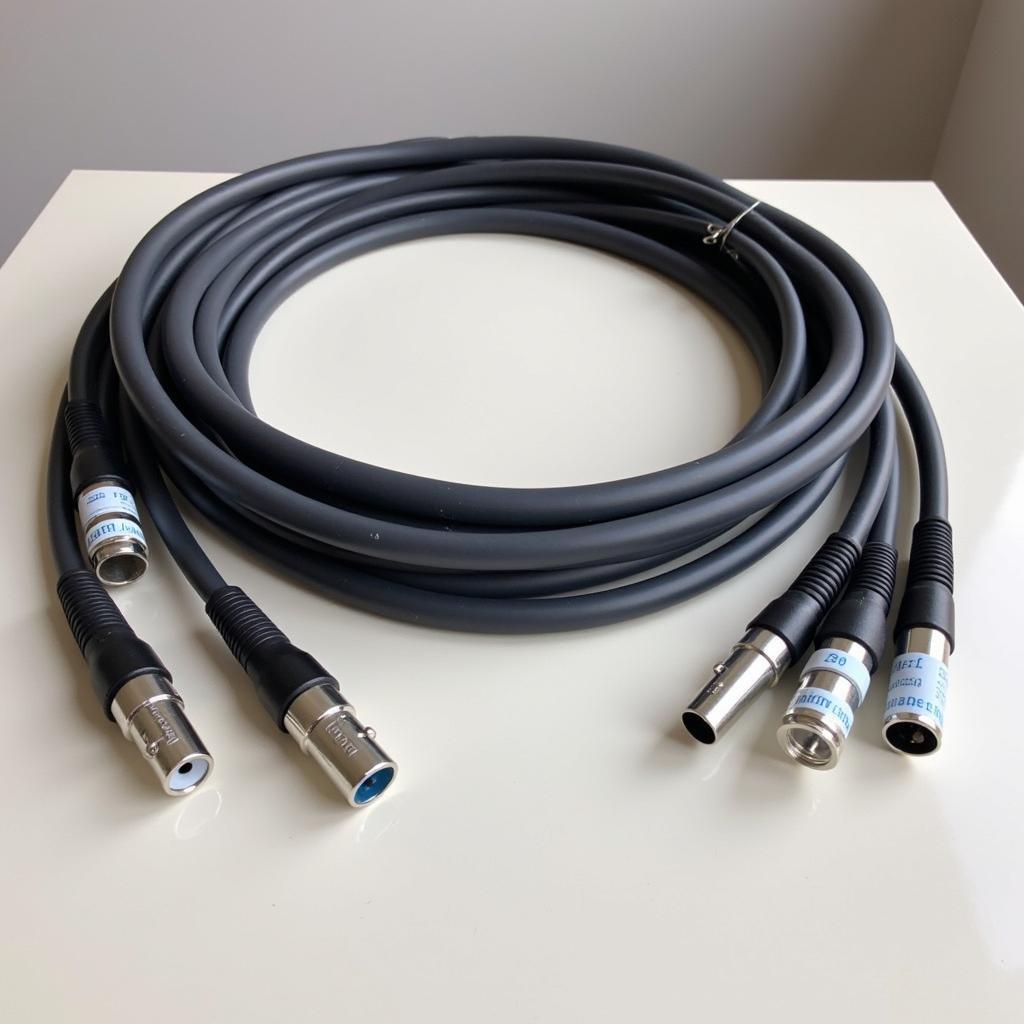Understanding the 16 Channel Snake
November 2, 2024A 16 Channel Snake is a crucial piece of equipment in live sound and recording setups. It allows for efficient and organized cable management, simplifying the connection between a stage and a mixing console. Imagine trying to run 16 individual microphone cables across a stage – a recipe for disaster, right? That’s where the 16 channel snake comes in, offering a neat and professional solution.
What is a 16 Channel Snake Cable?
A 16 channel snake, sometimes referred to as a multicore cable, is essentially a bundle of 16 individual audio cables housed within a single, protective jacket. This allows for the convenient transmission of multiple audio signals simultaneously. Think of it as a highway for sound, with each channel representing a separate lane. These snakes are particularly useful in live music venues, recording studios, and broadcast applications where numerous microphones and instruments need to be connected to a central mixing console. A well-maintained 16 channel snake ensures a clean and reliable signal path, minimizing interference and maximizing audio quality.
Benefits of Using a 16 Channel Snake
Using a 16 channel snake offers numerous advantages, particularly in complex setups. Firstly, it drastically reduces cable clutter, making the stage area safer and more manageable. This is a crucial safety aspect, preventing tripping hazards and ensuring a smooth workflow for both performers and technicians. Secondly, a snake consolidates multiple audio lines into one manageable cable, simplifying setup and teardown. This saves valuable time and effort, especially during live performances where quick changeovers are essential. Finally, the bundled design protects the individual cables from damage and interference, ensuring a clean and consistent signal. This translates to higher quality audio and a more professional sound.
 16 Channel Snake Cable Overview: A comprehensive view of a 16 channel snake cable, showcasing its bundled design and robust construction.
16 Channel Snake Cable Overview: A comprehensive view of a 16 channel snake cable, showcasing its bundled design and robust construction.
Different Types of 16 Channel Snakes
16 channel snakes come in various configurations to suit different needs and budgets. The most common type is the analog snake, which transmits analog audio signals. These are reliable and cost-effective, making them a popular choice for many applications. Digital snakes, on the other hand, convert analog signals to digital format for transmission, offering superior noise immunity and greater flexibility. However, they tend to be more expensive. Another distinction lies in the type of connectors used. While XLR connectors are the standard for professional audio, some snakes may utilize other connector types depending on the specific application.
Choosing the Right 16 Channel Snake for Your Needs
Selecting the right 16 channel snake involves considering several factors. The length of the cable is a primary concern, as it determines the distance between the stage and the mixing console. The type of connectors is another crucial factor, as it needs to be compatible with your existing equipment. Finally, your budget will play a role in determining whether an analog or digital snake is the best option.
Common Questions About 16 Channel Snakes
What is the difference between an analog and a digital snake? Analog snakes transmit analog audio signals directly, while digital snakes convert the signals to digital format.
How long of a snake cable do I need? The required length depends on the distance between your stage and mixing console. Measure the distance accurately to avoid cable shortages.
What are the benefits of using a snake cable? Snakes reduce cable clutter, simplify setup, and protect cables from damage, leading to cleaner audio and a safer work environment.
Why are 16 channel snakes so popular? They offer a good balance between channel capacity and manageable size, making them suitable for a wide range of applications.
What are the key features to consider when buying a snake? Cable length, connector type, analog vs. digital, and budget are all important considerations.
Setting Up and Maintaining a 16 Channel Snake
Proper setup and maintenance are crucial for maximizing the lifespan and performance of your 16 channel snake. Always ensure the cable is neatly coiled and stored in a dry, cool environment. Avoid sharp bends and excessive twisting, as this can damage the internal wiring. Regularly inspect the connectors for any signs of wear and tear, and replace them if necessary. By following these simple guidelines, you can keep your 16 channel snake in top condition for years to come.
In conclusion, a 16 channel snake is an invaluable tool for anyone working with complex audio setups. It offers a practical and efficient solution for cable management, ensuring a clean, organized, and professional setup. By understanding the different types of snakes and choosing the right one for your needs, you can optimize your audio workflow and achieve superior sound quality. Remember, investing in a quality 16 channel snake is an investment in your overall audio performance.
FAQ
- What is the typical price range for a 16 channel snake?
- Are there wireless alternatives to a 16 channel snake?
- Can I use a 16 channel snake with a smaller mixing console?
- How do I troubleshoot a faulty 16 channel snake?
- What are the best practices for storing a 16 channel snake?
- What are some reputable brands of 16 channel snakes?
- How do I choose the right cable length for my specific needs?
For further information on audio equipment and solutions, explore other articles on our website related to microphones, mixers, and stage setups.
Need assistance with your audio needs? Contact us at Phone Number: 0963418788, Email: [email protected] Or visit our address: 2M4H+PMH, Phường Nghĩa Thành, Gia Nghĩa, Đắk Nông, Việt Nam. We have a 24/7 customer support team.